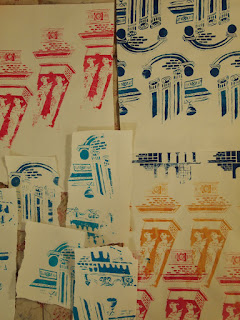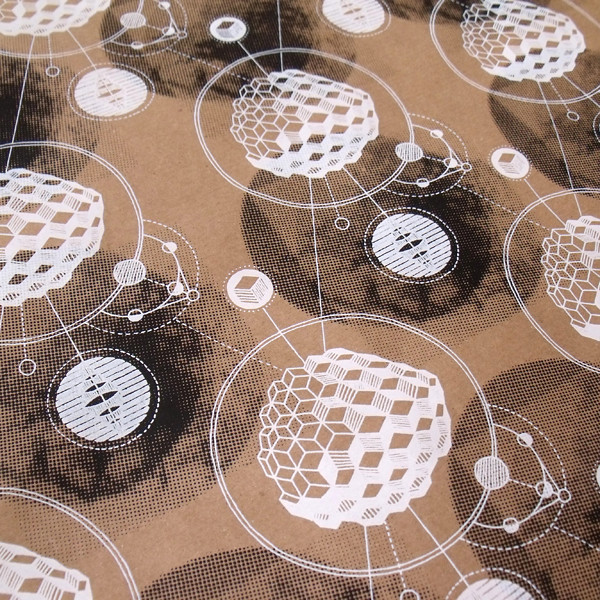The theme behind this print module was journeys, so whilst this was the subject of the artwork, it also stands to sum up my whole project - my journey exploring print. Throughout the project I have had to develop my work, trying to combine research and what I had learnt about this new practice into my own work. To begin with my work very much concentrated on the mark marking element, as I looked a continuous line drawing and line within my everyday photographs, but this soon moved onto looking solely at architecture. I looked at various areas of research, but the key influence on my work was the ‘garish’ fashion trend, which I then brought back into my own practice through use of colour, pattern and layering.
The editing process was very important in helping to develop my ideas. For example, I started off with lots of motifs in my sketchbook, from birds to lamp posts, but as soon as I had settled on my architectural theme I kept that as my focus. All whilst doing my print work in the studio, I was simultaneously creating new motifs and designs in my sketchbook to help create fresh ideas which prevented me repeating myself to frequently within my work. I discovered that when I found a technique that I really enjoyed I tended to create more exciting work, such as making digital designs where I found it quite easy to create multiple designs, so I tried to let this practice influence the rest of my work to try and improve the areas in which I was lacking.
My own research was a huge factor in influencing the direction of my work. The content was inspired directly by my surroundings, using the photographs I had taken of buildings on my walks around the city, cutting up the architectural details and then juxtaposing them against each other, before using that as direct inspiration for my motif work. My use of technique was largely directed by what had recently been introduced to us, but I was also inspired by the work of my peers and took their advice on which techniques worked well together and learnt from their mistakes, such as not washing out the reactive dyes thoroughly enough.
I felt overall I organised my project well, utilising the most of my time and using workshops effectively, but I also navigated the project itself well, pushing my ideas and my processes and trying to take the most out of the experience, which left me with a body of samples which I felt rounded up my project very well.
(Can't post photos at the moment as blogger will not
allow me to upload any more images, but will amend
this as soon as possible)
(Can't post photos at the moment as blogger will not
allow me to upload any more images, but will amend
this as soon as possible)























































